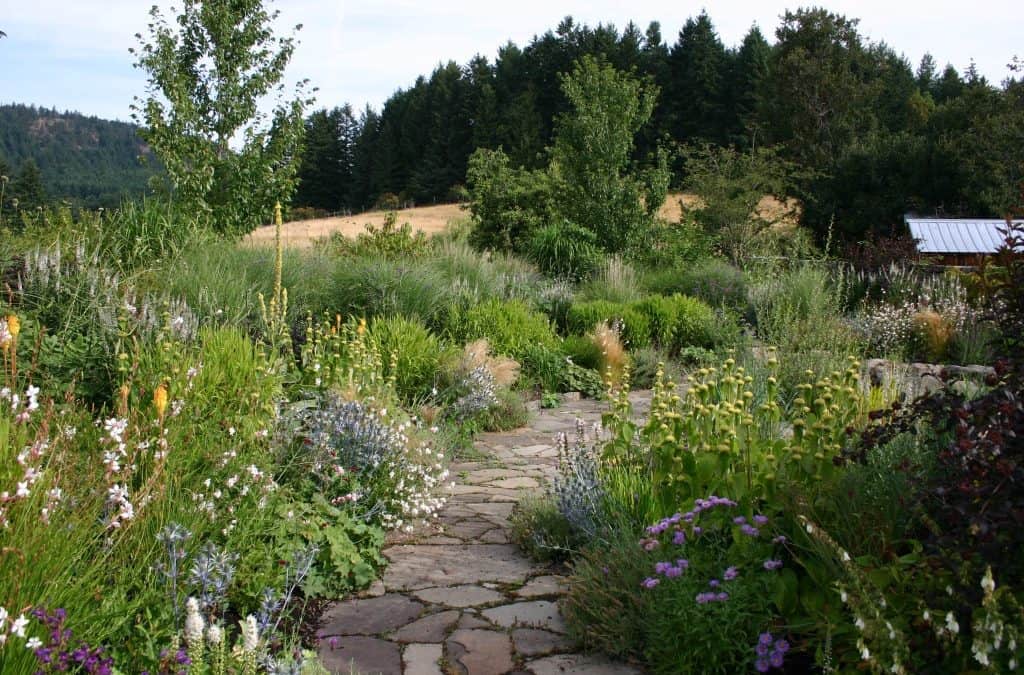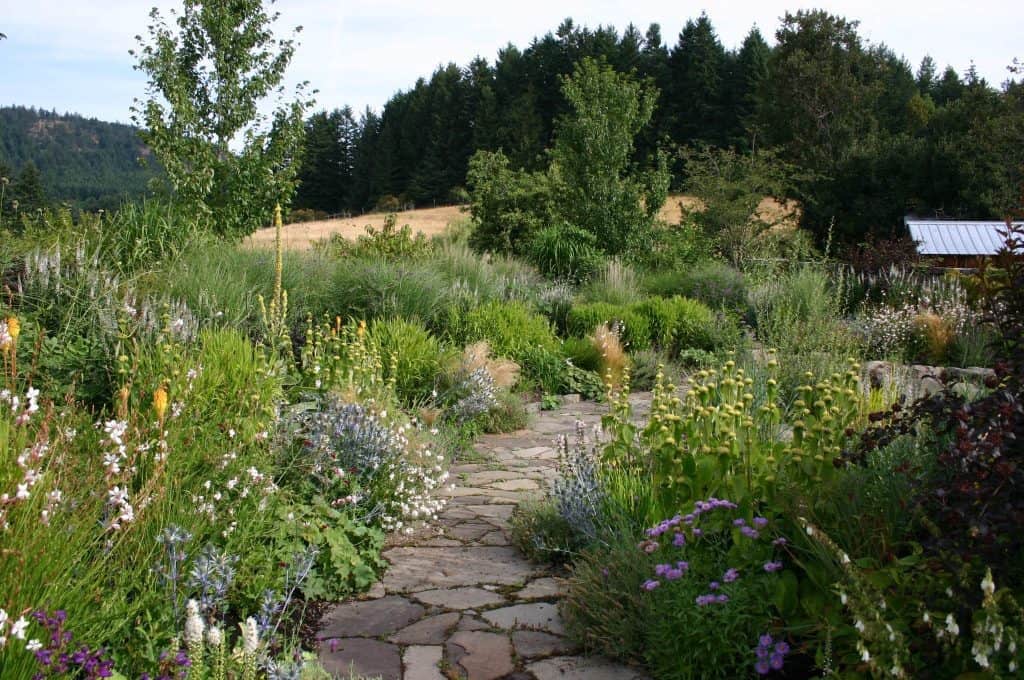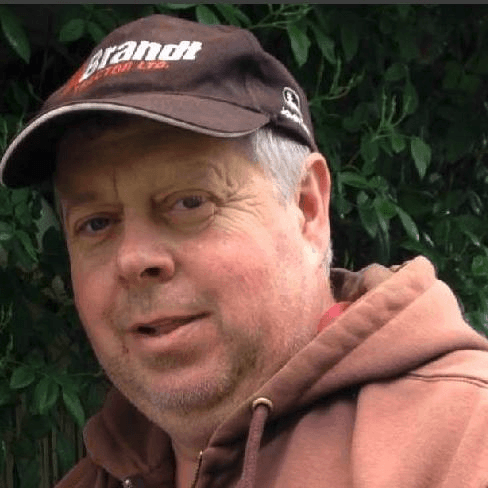This blog post focuses on another garden myth, this time it’s, “If I plant fewer plants within a given area this result in less work for me in terms of maintenance, less plants equal less work.”
I see a huge variety of plantings in both commercial and residential locations which are trying to provide some aesthetic value while, I’m presuming, lowering installation costs and simplifying maintenance. The trend that I often see is for new plantings to adopt a stratety in which mainly shrubs are planted and this ends up leaving large blank spaces between plants as shown in this image.
Image credit: https://www.hyattlandscaping.com
The perception is that this will be much easier to care for and I would argue that this is just not the case. If we take a look at nature for a moment and see how forests are assembled we see that there are some distinct layers within a forest system. We have Upper canopy trees, smaller trees, shrubs, vines, perennials and a bulb or tuber layer. If we ask ourselves how much maintenance does an existing forest require we would be left scratching our heads as the answer is none.
Image credit: https://rainforesteco.wordpress.com/2010/02/25/rainforest-ecobank-report-from-mata-atlantica/
How can we mimic this within our designed landscapes? Surely, we can reduce the amount of maintenance needed while keeping our aesthetic needs in place. In my opinion, the answer is yes, we can learn a great deal from how nature works and integrate this into our planned spaces.
In the below example we can see that the tree, shrub and perennial pieces of the puzzle are present. This planting is specific to its site and has a look that is in keep with this 110-acre organic farm. The planting is meant to fit in with the surrounding environment and you’ll note that is no soil showing. This image was taken two years after planting.
How does this all help to reduce the costs of maintenance?
The answer has a number of different considerations that play into this setting:
- The trees and shrubs have been planted with long-term growth in mind. They have the freedom to grow as they wish without any need for pruning. The perennial and grass plantings are really a lovely filler which fills the gaps and offers some extraordinary foliage and flower interest within these lower landscape layers.
- By filling in these gaps we have essentially removed opportunities for annual weeds to germinate and develop, so right out of the gate, less weeding.
- The fact that we have created a cover for the soil gives us some other advantages, firstly we are going to use less water even with more plant material. How can this be? Very little light is hitting the soil surface so the shade created by all of the plant material is like a large umbrella shading the soil from the intense summer sun. Less evoporation.
- With a denser planting, we can imagine that the below-ground root systems is vast and likely to be at least the same mass as the above-ground canopy, that’s a lot of roots. This system of roots works with the soil organisms within the soil to cycle nutrients that your desired plants are able to use, more soil life equals higher quality results and no need to apply synthetic fertilizers. Your plant roots emit compounds which feed and attract soil organisms, this high level of microbial activity around the root tips of your plants increases the availablity of plant soluable nutrients. This increase in available nutrients boosts plants growth and health. To continue supporting the soil food web we recommend an annual application of composted mulch or wood chips to provide all the food required for your soil.
- During the past 20 + years I have never applied any synthetic fertilizer or pesticide/herbicide to any of our projects, there is just no need. The nutrients or food for soil organisms is taken care of, very little weed pressure due to competition from our desired plant material. Plant health is very high and a reflection to soil health so little to no disease issues.
When looking at your next project please consider this approach, there is often an alternative and most likely someone out there is doing just that already.
Jamie Wallace operates Jaan Designs with his wife/life partner Angela. Together they design and build landscapes on Vancouver Island. Keep your eyes open for upcoming workshops and consider subscribing to there updates at https://www.jaandesigns.ca/





